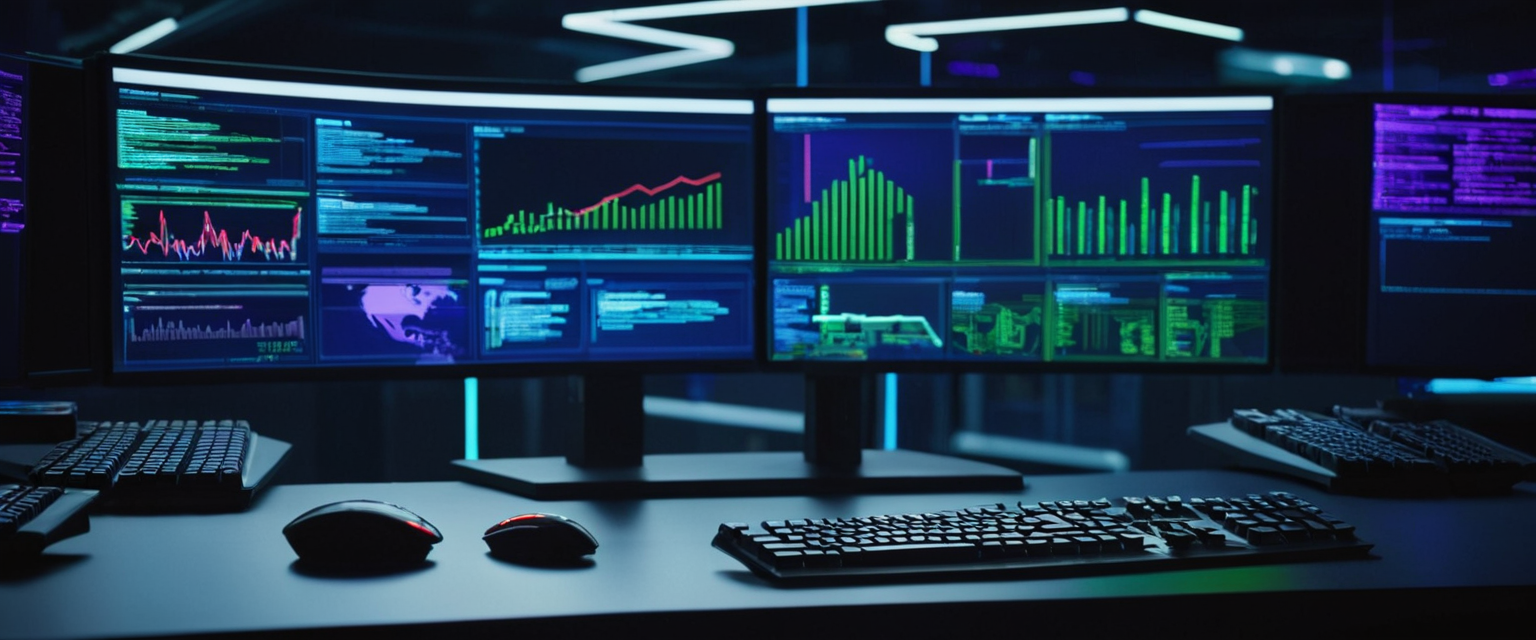
PowerShell represents both a powerful administrative tool and a significant cybersecurity concern that organizations must carefully balance. While the tool is indispensable for system administrators managing Windows environments, cybercriminals have increasingly weaponized PowerShell to conduct sophisticated attacks that bypass traditional security controls and execute malicious payloads entirely within system memory. This comprehensive analysis examines the threat landscape surrounding PowerShell abuse, the specific techniques attackers employ, detection methodologies that security teams can implement, and defensive strategies that form the foundation of robust virus and ransomware protection frameworks. Organizations seeking to develop effective comprehensive protection must understand both the offensive capabilities PowerShell provides to threat actors and the defensive mechanisms available through logging, monitoring, and configuration hardening.
The Fundamental Appeal of PowerShell to Threat Actors and Its Integration in Modern Attack Strategies
PowerShell has become a preferred tool in the attacker’s arsenal because it occupies a unique position within Windows operating systems that makes it exceptionally difficult to block or detect. PowerShell is a powerful scripting language and shell framework designed for Windows devices that provides a flexible system shell and scripting environment for task automation and configuration management. With its built-in capabilities, PowerShell enables system-level operations such as downloading files from remote locations, executing commands directly from memory, or accessing registry keys. The tool has been a preferred utility for system administrators for over a decade and is expected to replace the default Windows command prompt in the future, which means it enjoys legitimacy and universal deployment across enterprise networks.
Several factors contribute to PowerShell’s prevalence in cyberattacks, making it a centerpiece in modern threat landscapes. PowerShell dominates the “Living Off The Land” (LOTL) attack landscape, appearing in 71% of attacks according to recent telemetry data from security vendors analyzing millions of incidents. Its prevalence stems from several key factors including universal presence on modern Windows systems, powerful scripting capabilities, remote execution features, and deep system access through .NET Framework integration. Attackers leverage PowerShell for every attack stage, from initial execution through persistence, lateral movement, and data exfiltration, while its legitimate use in enterprise automation provides perfect cover for malicious activities. The practical consequence is that identifying malicious PowerShell usage becomes extraordinarily challenging because administrators and security tools expect PowerShell to be actively executing throughout the day.
Beyond raw usage statistics, PowerShell’s versatility makes it irreplaceable in the attacker toolkit. It can download and execute payloads directly in memory, avoiding disk-based detection that traditional antivirus products rely upon. Its ability to interact with Windows APIs enables sophisticated techniques like process injection and credential dumping that would normally require multiple specialized tools. PowerShell’s remote capabilities through WinRM and PSRemoting enable lateral movement without deploying additional tools, allowing attackers to pivot across networks silently. The introduction of PowerShell Core extending to Linux and macOS systems expands its attack surface beyond Windows environments, creating new vectors for cross-platform attacks.
A particularly insidious aspect of PowerShell abuse is that it enables fileless malware attacks, which represent a fundamental shift in how modern threats operate. Instead of trying to load executable malware files, which anti-virus software often catches, attackers look to gain control of PowerShell and use it to load malware directly into the computer’s memory, bypassing the need to execute it as a program from the disk, also known as a “fileless” malware attack, or living off the land (LOTL). Fileless malware is malicious code that resides in RAM and executes directly from memory rather than being written to the hard drive. The advantage for attackers is substantial: they can conduct entire attack chains—from reconnaissance through data exfiltration—without ever touching the file system where traditional security monitoring focuses resources.
Advanced Attack Methodologies: How Threat Actors Leverage PowerShell for Multi-Stage Compromises
PowerShell exploits work by leveraging the inherent capabilities of PowerShell to execute commands and scripts directly within the Windows operating system. Attackers often use PowerShell to establish communication with their command and control (C2) servers, allowing them to download and execute additional malicious payloads or exfiltrate sensitive data, and this method is particularly effective because it can operate without leaving traditional file-based traces, making it difficult for standard antivirus solutions to detect. Another key aspect of PowerShell exploits is their ability to perform actions directly from memory, bypassing the need to write any data to disk, which means that they can evade many security measures that rely on detecting malicious files.
Real-world attack scenarios demonstrate the sophistication with which threat actors weaponize PowerShell throughout the attack lifecycle. In one documented scenario, an attacker begins by leveraging PowerShell to scan a domain for high-privilege accounts using commands like Get-ADUser and Get-ADGroup to list out user accounts, focusing on administrative privileges. These reconnaissance steps, executed from within PowerShell, aim to identify domain admin accounts for later use. Without proper detection rules in place, these benign-looking PowerShell commands go unnoticed, allowing the attacker to create a map of the network’s most valuable targets. The attacker then moves into credential harvesting by digging deeper with PowerShell scripts to access cached credentials and password stores within Windows systems, leveraging tools like Get-Credentials or Invoke-Command to harvest credentials that have been saved by users during previous logins. These credentials often reside in Windows Credential Manager or other protected stores, and the attacker doesn’t need to crack passwords—just leverage what’s already there.
With privileged credentials in hand, attackers move into escalation and lateral movement phases, where PowerShell remains their tool of choice for stealthy, powerful, and capable execution without raising alarms. The attacker can use PowerShell to configure their own access mechanisms, establish hidden communication channels, and prepare systems for further exploitation. By the time the attack reaches its exploitation and command-and-control phase, attackers have established a foothold within the network, possess credentials, have system access, and have the tools to escalate privileges and move across the network undetected. PowerShell enables reflective DLL injection to exploit vulnerabilities within systems, making it appear as if nothing suspicious is happening. Reflective loading of assemblies allows the attacker to inject a DLL into memory without needing to write it to disk, an approach that is difficult for traditional antivirus tools to detect, and PowerShell becomes the perfect tool to load and execute the malicious code in memory, completely bypassing endpoint defenses.
In the final stage of attacks, when attackers achieve administrative control over compromised networks, they prepare for data exfiltration using PowerShell to orchestrate actions across multiple systems. PSExec, a well-known remote administration tool, is executed through PowerShell commands, often without raising suspicion, allowing attackers to exfiltrate sensitive financial data and credentials while using PowerShell to automate and accelerate the process. They also leverage WMIExec and SMBExec through PowerShell’s flexibility to orchestrate remote executions seamlessly, completing the lateral movement and escalation chain.
Specific attack frameworks demonstrate the centrality of PowerShell to organized threat operations. Notable examples of PowerShell exploits include the use of PowerShell to deploy Remote Access Trojans (RATs), which allow attackers to gain remote control over compromised systems, enabling them to execute commands, steal data, and maintain persistent access without detection. The TrickBot banking Trojan leverages PowerShell to download additional malicious payloads and establish command-and-control channels, allowing TrickBot to continuously evolve and adapt, making it a formidable threat. The Vice Society ransomware gang has been known to use sophisticated PowerShell scripts to automate data theft and encryption, demonstrating the tool’s effectiveness in executing complex, multi-stage attacks. A ransomware attack may be evidence of a previous, unresolved network compromise, for example, many ransomware infections are the result of existing malware infections, such as QakBot, Bumblebee, and Emotet, which frequently utilize PowerShell as their primary execution mechanism.
Obfuscation Techniques: Understanding How Attackers Hide Malicious Intent in PowerShell Code
Attackers frequently use obfuscation techniques to encode or encrypt their PowerShell commands, further complicating detection and analysis by security tools. These obfuscation methods transform readable PowerShell commands into complex, difficult-to-parse variations that bypass signature-based detection while retaining full functionality. Understanding these techniques is essential for security teams attempting to identify malicious PowerShell activity even when the attack patterns are intentionally obscured.
Base64 encoding represents one of the most common obfuscation techniques used by attackers. The script is first obfuscated in two layers of base64 encoding, before the clear text strings can be seen. The first layer of base64 encoding uses the -e option (short for -EncodeCommand). A command like `powershell.exe -encod VwByAGkAdABlAC0ASABvAHMAdAAgACIAdAB3AGUAZQB0ACwAIAB0AHcAdwBlAGUAdAAiAA==` will execute base64-encoded PowerShell content, with the encoded data containing the actual malicious instructions that only decode and execute at runtime. Monitoring command-line execution helps identify the use of harmful PowerShell commands that may be part of a larger attack.
Concatenation and string manipulation represent another layer of obfuscation that complicates detection. Attackers obfuscate commands by using concatenation techniques, string slicing, and environment variables to reconstruct command names that security tools are looking for. For example, attackers might split the IEX (Invoke-Expression) cmdlet across multiple variables or reconstruct it using character codes and string operations, making it invisible to regex-based detections that look for the literal string “invoke-expression“. These concatenation techniques add layers of complexity that defeat simple pattern matching while remaining functionally equivalent to the original command.
Encoding techniques like binary and hexadecimal representation add additional complexity layers. Attackers use escape characters, particularly the backtick (`) character which is PowerShell’s escape character, to obfuscate cmdlet names. Since PowerShell cmdlets are not case sensitive, attackers attempt to mix upper and lower case letters to hopefully evade static signature matchings that are case sensitive, transforming commands like `New-Object` into `nEw-oB`jecT` to defeat signature-based detection. These simple variations prove remarkably effective against security controls that rely on exact string matching.
Protect Your Digital Life with Activate Security
Get 14 powerful security tools in one comprehensive suite. VPN, antivirus, password manager, dark web monitoring, and more.
Get Protected NowMixed-case letter obfuscation combined with other techniques creates particularly challenging detection scenarios. The script may employ multiple simultaneous obfuscation methods, requiring sophisticated analysis to decode. An example showing the combination of these techniques would be a command like `& ([ScriptBlock]::Create(“Write-Host ‘$(“{0}{1}{2}{2}{0}” -f ‘t’,’w’,’e’), $([Char] 116)$([Char] 119)$(“$(([Char] 0x65))” * 2)t'”))` where multiple encoding methods are layered to disguise a simple Write-Host statement.
More sophisticated obfuscation includes time-based evasion techniques designed to defeat automated analysis environments. For example, a for loop at the start of a script like `for ($i=1; $i -le 13000; $i++) {$i,”`n”}` which just prints numbers from 1–13000, is most likely implemented to delay secondary stage payload download, in an attempt to exceed time thresholds of automated analysis environments. When a sandbox or automated analyzer has timeout limits—typically 30 seconds to a few minutes—these delays cause the analysis to terminate before the malicious payload executes, allowing the attack to succeed in production environments.

Detection Methodologies: Identifying PowerShell Abuse Through Behavioral Analysis and Logging
Effective detection of malicious PowerShell activity requires moving beyond simple signature matching to embrace behavioral analysis and sophisticated logging mechanisms that capture the full execution context. Organizations must implement multiple complementary detection approaches that operate at different points in the attack chain.
Indicators of Attack (IOAs) provide superior detection for LOTL techniques compared to traditional Indicators of Compromise (IOCs). While IOCs focus on specific artifacts like file hashes or IP addresses, IOAs identify behavioral patterns suggesting malicious activity. Examples include PowerShell executing with encoded commands, WMI creating remote processes, or scheduled tasks executing from temporary directories. IOA-based detection adapts to technique variations, providing resilient defense against evolving LOTL attacks. This represents a fundamental shift from reactive detection based on known malware signatures to proactive detection based on adversary behaviors and attack patterns.
Behavioral baselines establish normal patterns for administrative tool usage, enabling detection of anomalous activities suggesting LOTL attacks. Security teams must profile legitimate PowerShell usage, WMI activity patterns, and scheduled task creation across different user roles and systems. Machine learning algorithms can identify deviations from these baselines, flagging potential attacks for investigation. The approach requires continuous refinement as legitimate usage patterns evolve with business requirements.
Script block logging represents the most valuable telemetry source for detecting malicious PowerShell activity in modern environments. PowerShell version 5 introduces several new techniques to track malicious PowerShell scripts, with one of them being Script Block Logging. Script block logging captures the full content of every PowerShell command or script executed on the system, which is essential for detecting suspicious or obfuscated scripts that might bypass traditional security controls. Detecting malicious PowerShell scripts is critical in defending against modern cyber threats, as attackers increasingly leverage PowerShell for sophisticated and stealthy operations. A combination of advanced logging, behavioral monitoring, and anomaly detection can help identify PowerShell-based attacks early.
Event ID 4104 in the Microsoft-Windows-PowerShell/Operational log captures PowerShell script block logging, providing clear-text logs of the full script executed by PowerShell. This level of logging is on by default with PowerShell 5 and provides clear-text logging of the full script executed by PowerShell, which is useful because many PowerShell attacks leverage encoded scripts that are difficult to decipher. Even scripts that were heavily encoded or obfuscated at the command line are decoded at runtime and captured in their clear form in script block logs. A script block logging mechanism captures both the obfuscated and actual command, providing clarity about the script’s true intent.
Additional event sources provide complementary visibility into PowerShell execution. Event ID 4103 (Module logging) captures pipeline execution details and logs all loaded modules, which also captures the contents of source code supplied to the Add-Type cmdlet. Event ID 4688 (Audit Process Creation) when properly configured with command line auditing enabled provides the source process names executing the malicious commands that are processed in audit mode and logged. This provides insights on parent and child process names which are initiating the PowerShell commands or command line arguments. Event ID 400 in the “Windows PowerShell” classic event log has always provided context about PowerShell host process starts, including command-line logging, since PowerShell version 2.
Antimalware Scan Interface (AMSI) integration provides real-time script analysis capabilities that complement traditional logging approaches. Microsoft Defender for Endpoint utilizes the Antimalware Scan Interface (AMSI) to enhance protection against fileless malware, dynamic script-based attacks, and other nontraditional cyber threats. AMSI enables automatic analysis of scripts and code at runtime, before they execute, providing additional visibility into suspicious patterns. When Script Block Logging is enabled, PowerShell records the content of all script blocks that it processes, and once enabled, any new PowerShell session logs this information.
Memory-based detection techniques identify LOTL attacks that operate entirely in memory without touching disk. Advanced endpoint detection tools monitor process memory for suspicious patterns like injected code, reflective DLL loading, or PowerShell hosting malicious .NET assemblies. These techniques can identify sophisticated LOTL attacks that traditional antivirus misses. However, memory analysis requires significant processing resources and expertise to implement effectively.
AI-driven detection methods show promise for identifying sophisticated LOTL techniques that rule-based systems miss. Machine learning models trained on vast datasets of legitimate and malicious tool usage can identify subtle patterns indicating attacks. Natural language processing analyzes PowerShell scripts for malicious intent regardless of obfuscation. Deep learning models correlate multiple weak signals into high-confidence threat detection. Recent implementations report 47% improvement in LOTL detection rates, though false positive management remains challenging.
Specific detection patterns provide actionable guidance for security teams implementing detection logic. Monitoring for command-line execution helps identify suspicious commands that may indicate malicious PowerShell activity. Processes executing with specific suspicious flags like `-nop`, `-noni`, `invoke-expression`, `iex`, `.downloadstring`, or `downloadfile` warrant investigation as these cmdlets and parameters are frequently associated with malicious PowerShell use. The execution of PowerShell with unusually high counts of characters like `^`, `+`, `$`, and `%` suggests obfuscation attempts designed to split commands or parameters or insert extra characters. Monitoring for Invoke-Mimikatz and similar credential dumping frameworks represents another critical detection pattern, as these tools are commonly abused by adversaries during the post-compromise stage.
Prevention and Mitigation Strategies: Hardening PowerShell Environments Against Abuse
Organizations seeking comprehensive protection against PowerShell abuse must implement a layered defense strategy that combines multiple complementary controls addressing different attack phases. No single control can prevent all PowerShell-based attacks, making defense-in-depth approaches essential.
The principle of least privilege fundamentally reduces LOTL attack surface by limiting tool access to users and systems requiring them for legitimate purposes. Regular users should not have PowerShell access, while administrators should use separate accounts for administrative tasks. Service accounts require minimal permissions tailored to specific functions, and implementing just-in-time access for administrative tools further reduces exposure windows. This approach acknowledges that not everyone needs access to powerful system tools that attackers abuse. Organizations must audit which user populations truly require PowerShell access and restrict execution through policy and technical controls on systems where it is not needed.
PowerShell version management and security configurations significantly impact LOTL attack success. Organizations must ensure use of PowerShell version 5 (or higher) as PowerShell version 5 provides more enhanced security and logging capabilities including anti-malware scanning, script block logging and transcription. Previous versions of PowerShell offered little to no logging abilities and should be avoided. All the new features in PowerShell v5 offer improved usability and allow organizations to control and manage Windows-based environments more easily and comprehensively.
Constrained Language Mode represents a critical PowerShell security configuration that prevents most malicious PowerShell techniques while preserving administrative functionality. PowerShell Constrained Language mode is a security feature that restricts access to sensitive language elements that can be used to invoke arbitrary Windows APIs, features often required to perform sophisticated cyber attacks. The ConstrainedLanguage mode permits all cmdlets and a subset of PowerShell language elements, but limits the object types that can be used. By restricting the types of objects that PowerShell can manipulate and the methods that can be invoked, constrained language mode effectively blocks many advanced attack techniques while allowing administrators to perform routine tasks.
Execution policies, while not security boundaries, increase attack difficulty by setting a baseline requirement that scripts must meet before execution. Execution policy isn’t a security system that restricts user actions, as users can easily bypass a policy by typing the script contents at the command line when they cannot run a script. Instead, the execution policy helps users to set basic rules and prevents them from violating them unintentionally. Organizations should set execution policy to “RemoteSigned” at minimum, which requires scripts downloaded from the internet to be signed by a trusted publisher while allowing locally-created scripts to run. Code signing requirements ensure only approved scripts execute, providing another layer of control over script execution in the environment.
Antimalware Scan Interface (AMSI) integration enables real-time script analysis at runtime. AMSI provides deep operating system visibility by allowing security products to inspect scripts before they execute, catching malicious content that has been obfuscated. Windows Defender Application Control (WDAC), AppLocker, or both should be enabled on all systems that support these features to restrict tool execution based on various criteria. These application control policies can block PowerShell execution from unexpected locations, restrict execution to specific users, prevent execution from temporary directories, and enforce code signing requirements, creating defensive barriers against LOTL techniques.
Upgrade to modern operating systems that include enhanced security features. Windows 10 is still the most secure Windows operating system to date with PowerShell’s improvements going further than just logging capabilities. The framework added a new constrained language mode to create even more visibility and control over the commands PowerShell users can execute. Windows 10 also expanded security capabilities by integrating the Windows Antimalware Scan Interface (AMSI) for deeper operating system visibility. Organizations are recommended to use Windows Server 2019 or greater and Windows 10 or greater as they have security features, such as LSASS protections with Windows Credential Guard, Windows Defender, and Antimalware Scan Interface (AMSI), not included in older operating system versions.
Organizations must stay up to date with patching as fileless attacks are known to exploit vulnerabilities in trusted allow listed applications. Attackers can and will exploit allow listed application vulnerabilities to embed and execute their malicious scripts or codes, all made possible from gaining the privileges of the application. A strong patch management policy that balances productivity and security is highly recommended.
Just Enough Administration (JEA) enforces role-based system for administrative tasks and represents a more sophisticated implementation of least privilege security for PowerShell. PowerShell Just Enough Administration allows organizations to enforce a role-based system for administrative tasks where when a user begins a JEA session, they are allotted a restricted form of PowerShell that allows them to perform only the tasks and commands associated with their role. This prevents them from executing privileged commands they don’t need to. JEA is a security technology that enables delegated administration for anything managed by PowerShell. With JEA, administrators can reduce the number of administrators on machines using virtual accounts or group-managed service accounts to perform privileged actions on behalf of regular users, limit what users can do by specifying which cmdlets, functions, and external commands they can run, and better understand what users are doing through transcripts and logs showing exactly which commands a user executed during their session.
PowerShell Downgrade Attacks and Version Manipulation
Attackers exploit PowerShell’s backward compatibility to deliberately downgrade to older versions that lack modern security features. The PowerShell downgrade attack is a very low-hanging fruit that allows attackers to modify the current PowerShell version to remove security features. Most PowerShell sessions will start with the most recent PowerShell engine, but attackers can manually change the version. By “downgrading” the PowerShell version to 2.0, security features that were not implemented until version 5.0 can be bypassed. The attack only requires a one-liner to launch a new PowerShell process with flags specifying the version.
This represents a critical vulnerability in organizations that have not fully removed or disabled older PowerShell versions. Organizations must implement controls to prevent downgrade attacks by removing PowerShell 2.0 engine from devices and denying access to PowerShell 2.0 via application blocklisting. Additionally, when a PowerShell session is started under an application control policy, it runs in ConstrainedLanguage mode. Beginning in PowerShell 7.4, the start up banner display includes a message indicating it’s running in that mode, allowing users to have a usable interactive shell experience, running cmdlets and native commands, as well as access to basic language elements. But the user can’t access PowerShell, .NET, or COM APIs that could be abused by a malicious actor.

Comprehensive Monitoring and Incident Response for PowerShell Threats
To detect this attack effectively, organizations must implement advanced detection rules and behavioral analysis. Domain Admin Account Enumeration should be detected when attackers scan for privileged accounts. Credential Harvesting from Password Stores should be flagged when suspicious credential access and extraction occurs. Registry-based Persistence should be monitored for unusual PowerShell executions or registry changes. Memory Injection should alert on suspicious memory manipulation. Reflective DLL Injection should detect execution of unregistered code in memory. Webshell Activity should flag unusual command-line behavior indicative of a webshell. Obfuscated Scripts should identify base64 encoded or obfuscated PowerShell commands. Remote Command Execution should detect unusual remote execution methods like PSExec or WMIExec.
Network segmentation limits LOTL lateral movement opportunities by restricting communication between systems. Critical assets should reside in isolated network segments with strict access controls. East-west traffic inspection identifies suspicious tool usage crossing segment boundaries. Microsegmentation extends this concept to individual workload isolation, containing successful LOTL attacks and preventing enterprise-wide compromise from single system breaches.
Forensic Investigation and Attack Attribution
When PowerShell attacks are detected, forensic analysis is critical to determine the extent of the breach, how the attack was carried out, and what data may have been compromised. Key forensic steps must be implemented systematically to preserve evidence and understand attacker methodologies. Organizations should examine the script content that triggered the detection, looking for suspicious DLL imports, collection or exfiltration capabilities, suspicious functions, encoded or compressed data, and other potentially malicious characteristics. The script execution chain (parent process tree) should be investigated for unknown processes, and their executable files examined for prevalence, whether they are located in expected locations, and if they are signed with valid digital signatures.
File or network events from the involved PowerShell process should be examined for suspicious behavior. Organizations should investigate other alerts associated with the user/host during the past 48 hours, as Invoke-Mimikatz and alike scripts heavily use other capabilities covered by other detections. Whether the user needs to use PowerShell to complete tasks should be evaluated, and potentially compromised accounts should be investigated by searching for login events (for example, 4624) to the target host. Network and security events in the environment should be examined to identify potential lateral movement using compromised credentials.
Maintaining Your Watch Against PowerShell Abuse
PowerShell abuse represents a persistent and evolving threat that challenges traditional security approaches built around file-based detection and static signatures. The tool’s integration into Windows administration, its legitimate use throughout enterprises, and its powerful capabilities for system manipulation make it an irreplaceable component of both legitimate IT operations and modern attack campaigns. Organizations must recognize that comprehensive protection against PowerShell-based threats requires multilayered defenses that address both the technical attack vectors and the operational realities of modern Windows environments.
Effective defense requires combining enforcement of current PowerShell versions with modern operating system upgrades, comprehensive logging and monitoring through script block logging and behavioral analysis, application control policies that restrict execution based on context, and operational practices like least privilege access and just-in-time administration. Organizations must stay current with patches while balancing security against operational disruption, and they must implement network segmentation to contain attacks that do successfully penetrate perimeter defenses.
As attackers continue to evolve their PowerShell exploitation techniques through new obfuscation methods, defense evasion techniques, and attack frameworks, organizations must maintain vigilance through continuous monitoring, threat intelligence integration, and security team training. The principle that “what gets measured gets protected” applies directly to PowerShell security—organizations that implement comprehensive logging and behavioral monitoring gain visibility that enables early threat detection and response. Those that fail to monitor PowerShell activities comprehensively remain blind to attack stages that operate entirely outside traditional file-based detection mechanisms, leaving their networks vulnerable to the increasingly sophisticated attacks that leverage PowerShell as a primary attack platform.






